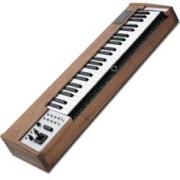×
![]()
Click here to view all instruments by classification
Oboe
|  Hornbostel-Sachs classification: 422.112 |
|
|
Oboe d'amore
|  Hornbostel-Sachs classification: 422.112 |
|
|
Oboe da caccia
|  Hornbostel-Sachs classification: 422.112 |
|
| Ocarina
|  Hornbostel-Sachs classification: 421.221.42 |
|
|  Octave mandolin Octave mandolin
|  Hornbostel-Sachs classification: 321.322 |
|
|
Octavin
|  Hornbostel-Sachs classification: 422.212 |
|
| Octoban
|  Hornbostel-Sachs classification: 211.211.1 |
|
|
 Octobass Octobass
|  Hornbostel-Sachs classification: 321.322-71 |
 |
| Octocontra-alto clarinet
|  Hornbostel-Sachs classification: 422.211.2 |
|
| Octocontrabass clarinet
|  Hornbostel-Sachs classification: 422.211.2 |
|
|  Omnichord Omnichord
|  Hornbostel-Sachs classification: 5 |
|
|  Ondes Martenot Ondes Martenot
|  Hornbostel-Sachs classification: 5 |
|
| Oopoochawa
|  Hornbostel-Sachs classification: 122.1 |
|
|  Organ Organ
|  Hornbostel-Sachs classification: 5 |
|
| Orpharion
|  The orpharion is a delicate instrument, which seems like a combination of a cittern and a lute: the tuning of the lute and the metal ("wire") strings of the cittern. In fact it is a later version (and about 3/4 size) of a bandora (see under). Only two original instruments survived : the Palmer orpharion (in Copenhagen) and the Rose orpharion (in UK). It was designed in the second half of the 16th century.
The orpharion was made like a guitar, with a flat or slightly rounded back, and with a beautiful wavy outline (which fits in the outline of a renaissance lute). The rosette was carved in the soundboard (like the lute) or made of separate wood and inserted.
|
|
|  Oud Oud
|  Hornbostel-Sachs classification: 321.321 |
|
| Overtone zither
|  |
|
|
|